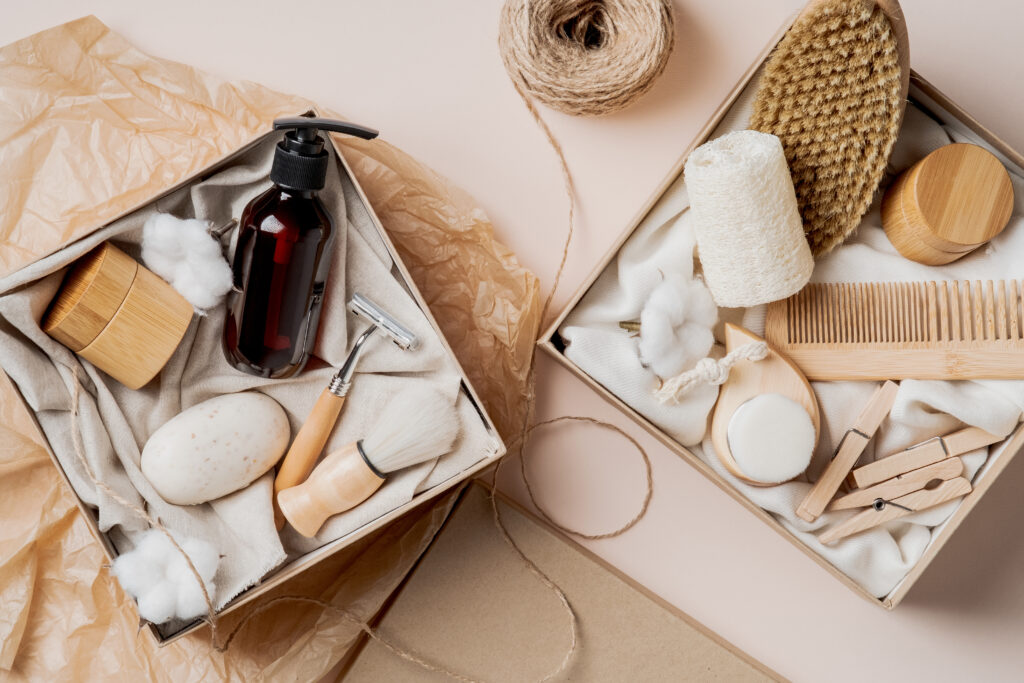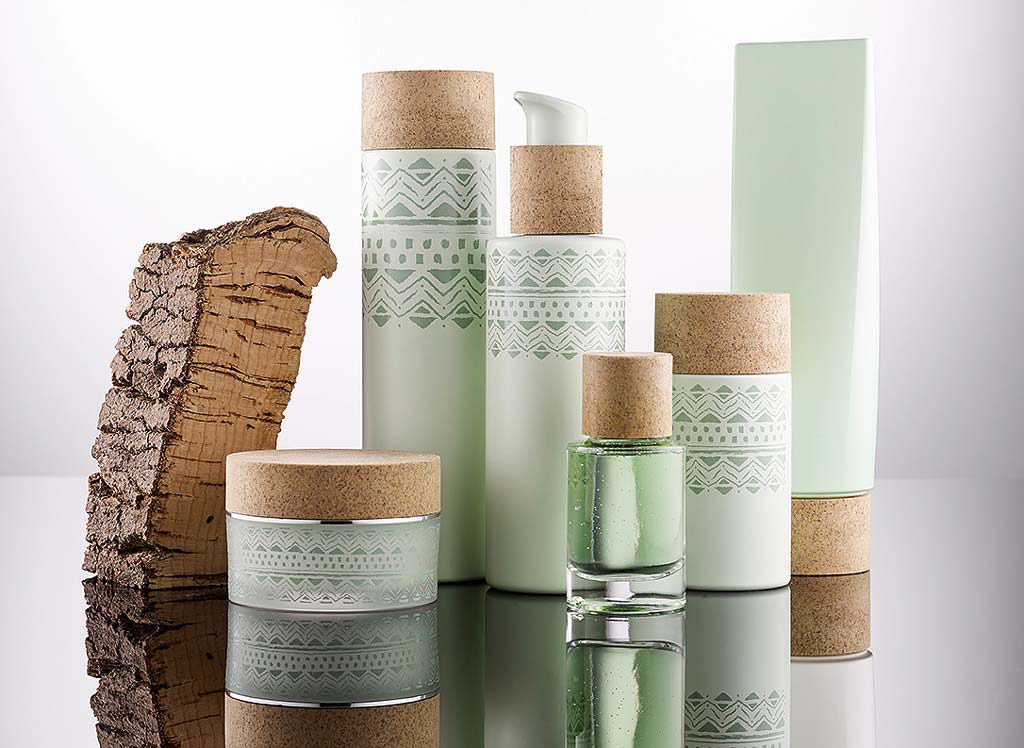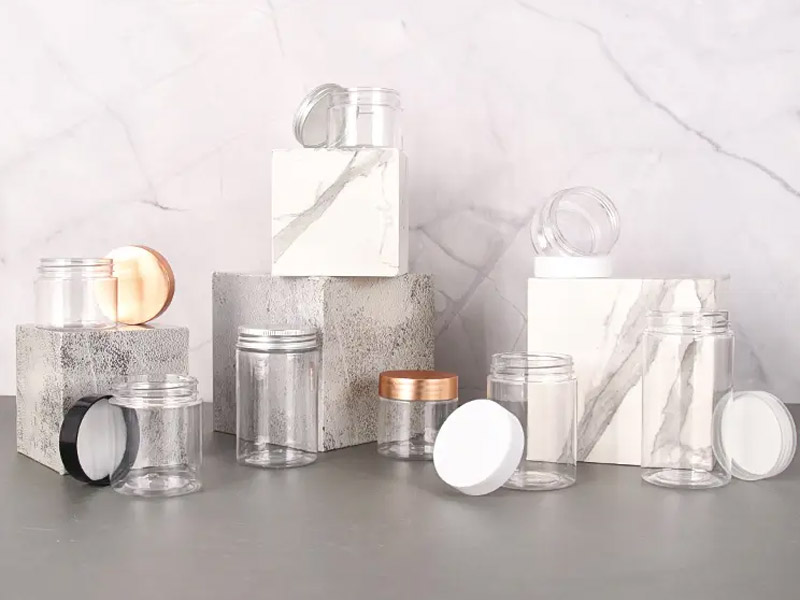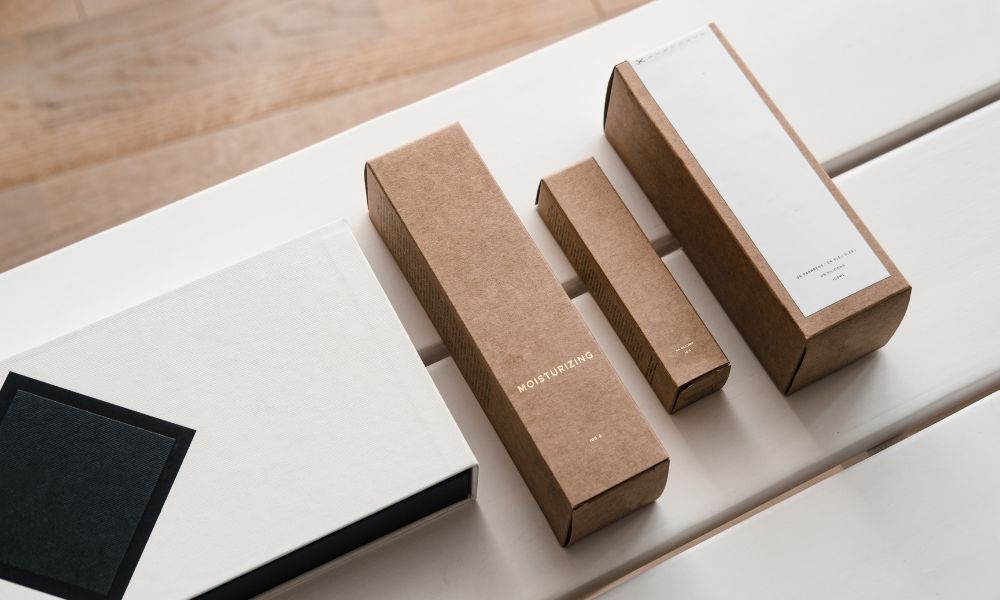In the competitive cosmetics industry, adequate packaging is crucial for small businesses to stand out. It’s not just about protecting the product; packaging communicates the brand’s identity and values, significantly impacting consumer choices. For small enterprises, innovative packaging is a crucial strategy to differentiate from competitors, offering a unique brand experience to customers.
With the fast-paced nature of the cosmetics market, small businesses must use creativity and efficiency in their packaging strategies to capture attention. This introduction will explore essential packaging strategies for small businesses, focusing on creativity, sustainability, and cost-effectiveness. Small companies can make a lasting impression through strategic packaging, attracting and retaining customers in a crowded marketplace.
The Importance of Cosmetic Packaging

Cosmetic packaging is more than just functional; it is an important marketing tool that can significantly influence consumer behavior and brand perception. Packaging is often the first interaction between consumers and a product in a market saturated with choice, making it a decisive factor in the purchase process.
This section delves into how effective packaging can enhance brand recognition, drive consumer decisions, and ultimately contribute to a brand’s success.
1. First Impressions Matter
The visual appeal of packaging can attract potential customers, making a product stand out on crowded shelves. Well-designed packaging can convey the quality and essence of the product, leaving a solid first impression that leads to a purchase.
2. Brand Identity and Storytelling
Packaging is a powerful medium for storytelling, allowing brands to communicate their values, origins and uniqueness. This connection is crucial for small businesses to build a loyal customer base. Packaging can embody a brand’s identity and convey a compelling narrative through thoughtful design elements such as colors, textures, and graphics.
3. Consumer Trust and Loyalty
High-quality, informative, and secure packaging can build consumer trust. Clear labeling that includes ingredients, usage instructions, and benefits helps consumers make informed decisions, fostering trust and loyalty over time. Moreover, packaging that prioritizes user convenience, such as easy-to-use dispensers or resealable containers, enhances the overall user experience, encouraging repeat purchases.
4. Sustainability as a Competitive Advantage
Today’s consumers are increasingly environmentally conscious, making sustainability in packaging more important than ever. Eco-friendly packaging solutions appeal to consumer values and demonstrate a brand’s commitment to environmental responsibility.
For small businesses, adopting sustainable packaging practices can be a significant differentiator and align with a growing consumer preference for brands that contribute positively to the planet.
The role of packaging in the cosmetics industry cannot be understated. It’s an essential element that influences consumer perceptions, drives purchases, and builds brand loyalty.
For small businesses, investing in innovative, sustainable, and consumer-friendly packaging is not just a marketing strategy but a necessity for growth and success in a highly competitive market.
Design Principles and Concepts

Effective cosmetic packaging design is not just about beauty. It is a strategic blend of creativity, functionality and market understanding.
For small businesses aiming to make a mark in the cosmetics industry, adhering to key design principles can elevate their product presentation and appeal to their target audience.
Here are the foundational design principles and concepts that can guide small businesses in creating impactful cosmetic packaging.
1. Simplicity and Clarity
In the world of design, less is often more. A clean, simple packaging design can more effectively communicate the essence of the brand and the product. Overcomplicated designs can overwhelm consumers and obscure the product’s message. Design simplicity helps achieve clarity, making it easier for consumers to understand what the product is and why it benefits them.
2. Authenticity and Originality
Standing out in a crowded market requires originality. Packaging that reflects the brand’s authentic story, ethos, and values can create a unique identity. Consumers gravitate towards genuine brands that offer something different from the mainstream. Originality in design can come from unique packaging shapes, innovative materials, or creative graphics that tell the brand’s story visually compellingly.
3. Target Audience Alignment
Understanding your target audience is crucial to packaging design. The design should resonate with the preferences, lifestyle and values of the target consumer. For example, a youthful, vibrant design may appeal to a younger crowd, while simple, elegant packaging may appeal to a more mature audience. Market research can provide insights into the target audience’s preferences, guiding the design process toward packaging that appeals directly to them.
4. Color Psychology
Colors have a profound impact on consumer perceptions and emotions. Each color can evoke different feelings and associations. For example, green often represents nature and sustainability, while blue can convey trust and reliability. Selecting the right color palette for packaging can influence how consumers perceive the product and brand, aligning with the desired brand image and emotional response.
5. Texture and Material Choice
The tactile experience of packaging can also significantly affect consumer perception. Materials and textures should reflect the brand’s aesthetic and consider sustainability and practicality. Innovative materials like biodegradable plastics or recycled paper can enhance brand perception among environmentally conscious consumers. The choice of material can also contribute to the product’s premium feel or practical usability.
6. Typography and Graphic Elements
Typography and graphics are critical in packaging design, from brand name presentation to information hierarchy. Legible, well-chosen fonts can make packaging more readable and appealing, while graphic elements can add visual interest and reinforce brand identity. Consistency in a product’s typography and graphic style helps build a cohesive brand image.
By following these design principles and concepts, small businesses can create cosmetic packaging that stands out and resonates with their target audience. For small businesses in the cosmetics industry, investing in thoughtful, well-designed packaging is a step toward building a strong, recognizable brand.
Cost-Effectiveness Strategies
Balancing aesthetic appeal with cost-effectiveness is crucial in cosmetic packaging for small businesses. While innovative and eye-catching designs are essential for standing out in a competitive market, managing production and material costs is equally important to maintain profitability.
Here are strategies small businesses can adopt to achieve cost-effective packaging solutions without compromising quality or brand identity.
1. Optimize Design for Production Efficiency
Streamlining packaging designs can significantly reduce production costs. This involves simplifying packaging shapes, minimizing the use of mixed materials that complicate recycling and manufacturing, and designing for ease of assembly. Businesses can lower labor costs and increase manufacturing efficiency by optimizing the production design.
2. Select Cost-Effective Materials
Material selection greatly influences the cost of packaging. Small businesses should consider materials that offer both durability and cost savings. For example, polyethylene terephthalate (PET) is a recyclable and affordable plastic option for various cosmetic products. Additionally, exploring bulk purchasing options for materials can lead to significant discounts.
3. Leverage Digital Printing
Traditional printing methods can be costly, especially for small production runs. Digital printing, on the other hand, offers a cost-effective alternative with the added benefits of high-quality prints and the ability to modify designs between batches easily. This flexibility is particularly advantageous for small businesses experimenting with limited edition packaging or seasonal designs without incurring high costs.
4. Sustainability as a Cost-Saving Measure
Adopting sustainable packaging practices can also lead to cost savings in the long term. Materials such as recycled paper or biodegradable plastics appeal to eco-conscious consumers and can be more cost-effective due to their growing availability and support from environmental initiatives. Furthermore, designing packaging to be reusable or refillable can enhance customer value and loyalty, potentially reducing the need for frequent packaging updates.
5. Minimize Packaging Components
Reducing the number of components in packaging can lower production and shipping costs. This approach simplifies manufacturing and helps produce more sustainable products by minimizing waste. For instance, opting for a single, well-designed box instead of additional layers of wrapping or inserts can significantly affect material and shipping expenses.
6. Collaborate with Suppliers
Building solid supplier relationships can improve pricing, terms, and insights into cost-saving materials and technologies. Suppliers may offer suggestions for alternative materials or design adjustments that lower costs without sacrificing quality. Additionally, collaborating on just-in-time inventory management can reduce storage costs and minimize waste.
For small businesses in the cosmetics industry, achieving cost-effective packaging requires a strategic approach that balances aesthetic appeal, functionality, and sustainability with cost considerations.
Small businesses can create compelling, cost-efficient packaging that appeals to consumers and supports the bottom line by optimizing designs, selecting appropriate materials, embracing digital printing, and minimizing packaging components.
Environmental and Sustainability Considerations
The shift towards environmental sustainability in packaging is not just a trend but a fundamental change in how businesses approach product presentation. For small businesses in the cosmetics industry, adopting eco-friendly packaging practices is both a responsibility and an opportunity to differentiate in a crowded market.
Here are key strategies to integrate sustainability into cosmetic packaging, enhancing brand value and appealing to the growing segment of eco-conscious consumers.
1. Biodegradable and Recyclable Materials
One of the most direct ways to reduce environmental impact is by using biodegradable or recyclable materials. Options like PLA (polylactic acid), a bioplastic made from renewable resources such as corn starch, and post-consumer recycled paper can significantly lower the ecological footprint. These materials degrade more efficiently than traditional plastics and send customers a strong message of environmental stewardship.
2. Minimize Packaging Waste
Reducing the amount of packaging used per product is a straightforward yet effective strategy. This can be achieved by designing compact packaging that fits the product snugly without unnecessary layers or by adopting minimalist design principles. Additionally, encouraging the concept of refillable packaging allows consumers to reuse the primary container, drastically cutting down on waste.
3. Soy-based and Vegetable Inks
Moving away from petroleum-based inks to soy or vegetable-based alternatives for packaging printing can have a notable environmental benefit. These inks are renewable and offer better recyclability and lower toxicity levels, making them a safer choice for both the environment and consumers.
4. Eco-design Principles
Incorporating eco-design principles involves thinking about the product’s life cycle from the outset. This includes considerations like ease of disassembly for recycling, reducing the use of mixed materials that can complicate recycling processes, and designing for durability to extend the product’s life. Eco-design minimizes environmental impact and often results in more innovative and user-friendly packaging.
5. Sustainable Sourcing
Ensuring that materials are sourced from sustainable practices is critical. This includes using recycled materials, materials from well-managed forests, or materials certified by environmental organizations. Transparently communicating these practices through packaging and marketing can strengthen a brand’s eco-friendly image and build trust with consumers.
6. Energy-efficient Manufacturing Processes
Adopting manufacturing processes that reduce energy consumption can further lessen the environmental impact of packaging. This includes using renewable energy, optimizing production processes to increase efficiency and minimizing waste during manufacturing.
Conclusion: Integrating environmental and sustainability considerations into cosmetic packaging is essential for small businesses aiming to align with consumer values and reduce their ecological footprint.
Not only do these practices meet the demands of eco-conscious consumers, but they also set a foundation for long-term sustainability and success in the cosmetics industry.
Enhancing Customer Experience through Packaging

For small businesses in the cosmetics industry, packaging is more than just a container for their product; it’s an integral part of the customer experience. A thoughtfully designed package can delight customers, enhance brand perception, and even become a decisive factor in repeat purchases. Here’s how small businesses can leverage packaging to elevate the customer experience and foster a deeper connection with their audience.
1. User-Centric Design
Packaging should prioritize ease of use and convenience. Features such as easy-to-open seals, dispensers that control product flow, and compact designs for portability significantly enhance user satisfaction. By considering the customer’s daily interaction with the product, businesses can design packaging that meets their needs and exceeds their expectations.
2. Sensory Engagement
Engaging multiple senses can transform the unboxing experience into a memorable event. Incorporating textures that invite touch, using colors that convey specific emotions, or adding scents that evoke pleasant associations can make opening and using the product a delightful sensory experience. This multisensory approach can turn a simple product into an immersive brand experience.
3. Personalization
Offering personalized packaging options, such as custom labels or the ability to choose colors and designs, caters to consumers’ desire for individual expression. This level of personalization can foster a stronger emotional connection to the brand, making customers feel valued and understood.
4. Educational and Interactive Elements
Including educational content about the product or brand story can enrich the customer experience. QR codes that link to tutorials, product origin stories, or tips for recycling the packaging add value and engagement beyond the initial purchase. This informs the consumer and encourages interaction with the brand across multiple platforms.
5. Reusability and Multi-functionality
Designing packaging that can be reused for purposes other than its original intent adds value for consumers. Containers that can be repurposed as storage options or packaging that transforms into a decorative item extend the life of the packaging and reduce waste. This approach appeals to eco-conscious consumers and reinforces the brand’s commitment to sustainability.
6. Innovative Opening Experiences
Opening a product can be transformed into a unique brand signature. Innovative mechanisms like tear strips, pull tabs, or origami-folded boxes create an engaging unboxing experience. This sets the brand apart and generates excitement and anticipation around the product.
Enhancing the customer experience through packaging is a strategic approach that small cosmetics companies can employ to deepen customer engagement and loyalty.
Small businesses can create packaging that delights customers and distinguishes their brand in a competitive marketplace by focusing on user-centric design, sensory engagement, personalization, educational content, reusability, and innovative opening experiences.
Compliance with Regulations and Safety Standards
For small businesses in the cosmetics industry, navigating the complex landscape of regulations and safety standards for packaging is a critical aspect of product development. Compliance ensures the safety and well-being of consumers and protects the business from legal challenges and potential financial liabilities.
Here’s how small businesses can align their packaging practices with regulatory requirements and safety standards.
1. Understanding Regulatory Requirements
Different regions and countries have their own set of regulations governing cosmetics packaging. These can include specific labeling requirements, certain materials or ingredient restrictions, and product safety and consumer protection standards. Small businesses must invest time in understanding the regulatory landscape of their target markets. This might involve consulting with legal experts or regulatory bodies to ensure full compliance.
2. Labeling Accuracy and Transparency
Accurate and transparent labeling is a cornerstone of packaging compliance. This includes displaying ingredient lists, usage instructions, manufacturing details, and potential allergens or hazards. Labels should also comply with size, font, and language specifications as required by law. Providing consumers with comprehensive product information meets regulatory standards and builds trust and credibility.
3. Material Safety and Quality Control
Choosing safe and approved materials for use in cosmetics packaging is essential. This means verifying that packaging materials do not react adversely with the product, are free from harmful substances, and meet quality standards for durability and safety. Implementing rigorous quality control processes to check for contamination, defects, or inconsistencies is vital to ensure that packaging meets both regulatory and consumer safety expectations.
4. Sustainability and Environmental Regulations
Environmental considerations are increasingly becoming part of regulatory requirements for packaging. This includes mandates for recyclable materials, reduced use of plastics, and limitations on the carbon footprint of packaging processes. Small businesses should prioritize sustainability to comply with regulations and appeal to the growing consumer demand for eco-friendly products.
5. Staying Informed about Changes in Regulations
Regulations and standards can evolve, reflecting new safety concerns, environmental priorities, or technological advancements. Small businesses need to stay informed about these changes to ensure ongoing compliance. Subscribing to regulatory updates, participating in industry associations, and attending relevant workshops or seminars can help businesses keep up with evolving requirements.
Compliance with regulations and safety standards is a non-negotiable aspect of cosmetic packaging for small businesses.
Small businesses can navigate the complexities of compliance by thoroughly understanding regulatory requirements, ensuring labeling accuracy, selecting safe materials, adhering to environmental regulations, and staying updated on changes.
This safeguards consumer health and the environment and establishes a solid foundation for business integrity and market success.
Conclusion and Future Trends
As we have explored, packaging plays a crucial role in the success of small businesses within the cosmetics industry, serving not only as a protective container for the product but also as a critical marketing tool that communicates brand identity, values, and differentiators.
The strategic importance of innovative, cost-effective, sustainable, and consumer-focused packaging cannot be overstated. As small businesses look to the future, staying abreast of emerging trends and technological advancements in packaging will be essential for maintaining competitiveness and appealing to evolving consumer preferences.
1. Personalization and Digitalization
The trend towards personalization will continue to grow, with advances in digital printing and manufacturing technologies making it easier and more cost-effective to offer customized packaging options. This includes personalized designs, names, and messages that cater to individual consumer preferences, enhancing the customer experience and fostering brand loyalty.
2. Smart Packaging Innovations
Innovative packaging will become increasingly prevalent, incorporating QR codes, NFC (Near Field Communication), and AR (Augmented Reality). These technologies can transform the packaging into an interactive platform, offering consumers additional product information, authenticity verification, and engaging digital experiences. This represents an opportunity for small businesses to add value and differentiate their products in a crowded market.
3. Sustainability and Circular Economy
Sustainability will remain a dominant theme in packaging, with a shift towards circular economy models where packaging is designed to be reused, recycled, or composted. Innovations in biodegradable materials, refillable systems, and minimalistic packaging designs will continue to evolve in response to consumer demand for environmentally responsible products.
4. Regulatory Evolution
As environmental concerns become more pressing, regulations around packaging sustainability will tighten. Small businesses must stay informed and adaptable to comply with new laws regarding recyclable materials, waste reduction, and carbon footprint limitations. This may involve reevaluating packaging materials, processes, and supply chains to ensure compliance and sustainability.
5. E-commerce Ready Packaging
With the rise of online shopping, e-commerce-ready packaging that is durable, cost-effective, and optimized for shipping will become increasingly important. This involves designing packaging that can withstand the rigors of transit without excessive materials or weight, minimizing shipping costs and environmental impact.
For small businesses in the cosmetics industry, the future of packaging offers both challenges and opportunities. By embracing innovation, focusing on sustainability, and prioritizing the customer experience, businesses can create packaging solutions that meet regulatory and environmental standards and drive brand differentiation and loyalty.
Keeping a pulse on future trends and technological advancements will enable small businesses to anticipate changes in consumer preferences and regulatory landscapes, positioning them for success in the dynamic world of cosmetics.




